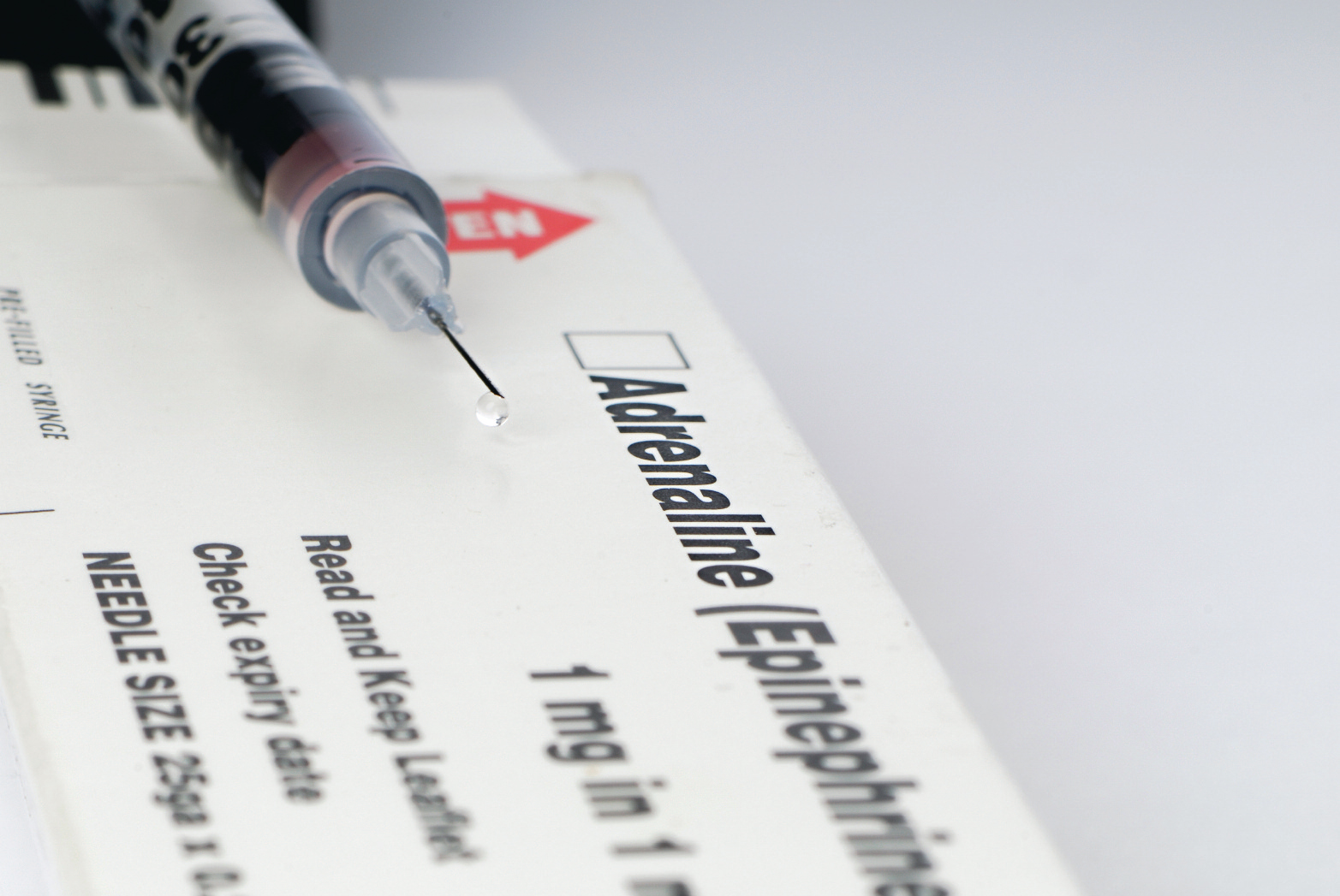Practice

Saving lives with adrenaline
In Practice
We know you want to continue to build on your practice, why not hear from others in the sector striving to do the same.Bookmark
Record learning outcomes
Adrenaline auto-injectors are potentially life-saving treatments for anaphylaxis but around two-thirds of the UK population don’t know how to use them. Such a lack of knowledge could have fatal consequences, as Victoria Goldman reports.

According to NICE, around one in 1,333 people in England have experienced anaphylaxis at some point in their lives. Around 20 deaths from anaphylaxis are reported each year in the UK.
“A person who is at high risk of an anaphylactic reaction needs to have an adrenaline auto-injector available at all times and know how to use it properly,†says Amena Warner, Allergy UK nurse practitioner. “In the case of a child, this will be the parent/carer.â€
If an anaphylactic reaction occurs, the adrenaline needs to be injected into the muscle of the upper outer thigh but the Anaphylaxis Campaign has found that, despite selfinjectable adrenaline being present in most incidents, it was only administered in 38 per cent of cases.
Choice of device
Three adrenaline auto-injector devices are currently available in the UK:
- Epipen (Meda)
- Jext (ALK Abello)
- Emerade (Bausch & Lomb).
All work slightly differently and the doses and needle lengths vary – so it is important that patients are prescribed the right product to suit their needs. Generally, the prescriber’s decision is based on the patient’s age and body weight, as well as the potential severity of any anaphylactic reaction – but this isn’t always clear-cut.
“With children, a suitably qualified healthcare professional has to assess which dose is prescribed based on their age and bodyweight, and when to move them onto an adult dose,†says Amena Warner.
“Too low a dose can be more of a risk than too high a dose. The adrenaline dose needs to be high enough to bring the blood pressure back up and resolve the anaphylactic reaction. That is why those at risk are prescribed two auto-injectors, so that another can be given if the first dose isn’t effective.â€
The Resuscitation Council recommends that healthcare professionals treat anaphylaxis with an intramuscular dose of adrenaline 500mcg for adults and children over 12 years but says 300mcg is suitable for self-administration.
Epipen and Jext are available in doses of 150mcg (0.15ml) and 300mcg (0.3ml). Emerade is available in 150mcg, 300mcg and 500mcg (0.5ml) doses.
Rob Travers, product specialist at Bausch & Lomb, believes that more teenagers and adults at risk of severe anaphylaxis should be prescribed the 500mcg dose. “As children reach adolescence or 30kg in weight, they are moved up to the 300mcg auto-injector, but if patients then reach 60kg or over, they may be being under-dosed.
“When the Resuscitation Council guidelines were developed, there were only two doses of adrenaline autoinjector commonly available – 150mcg and 300mcg – but now there is a 500mcg dose on the market for healthcare professionals to prescribe.â€
Amena Warner disagrees, saying there isn’t enough research to show that 500mcg devices should be prescribed as standard. “If someone uses, or is given, an adrenaline autoinjector for an anaphylactic reaction, they should go straight to hospital. The auto-injectors are intended to bide time so that other medication can be given at the hospital by the appropriate healthcare professionals.â€
Needle length
According to Resuscitation Council guidelines, an autoinjector needle needs to be long enough to ensure the drug is injected into the patient’s thigh muscle – a 25mm needle is ideal for all ages (a 16mm needle is suitable for pre-term or very small babies). Even if the injection doesn’t reach into the muscle, it will still have some effect, but it may take longer to relieve anaphylactic symptoms.
A June 2014 MHRA report states that the exposed needle length is important, rather than the needle length as a whole, as a portion of the needle remains inside the device when fired. Both Jext and Epipen have 16mm needles, but Jext has a 15.36mm exposed needle length and Epipen a 15.02mm exposed needle length. In June 2015, a study published in the journal Allergy revealed that 87 per cent of women, and people with a body mass index above 30, have subcutaneous tissue on their thighs that is deeper than 15.02mm.
“The current needle length seems adequate for most cases of anaphylaxis,†says Amena Warner, “but women tend to have more subcutaneous tissue, especially on their thighs, and there has been discussion about whether adrenaline via an autoinjector will reach the muscle in some people.â€
Emerade is currently the only device with a 25mm needle (23mm exposed needle length) but the MHRA and Resuscitation Council say that 23mm may still not be adequate for certain patients due to rising obesity levels. In some adults, an even longer length (38mm) may be necessary.
Education and advice
Patients with anaphylaxis are prescribed new auto-injectors each year, but not all of them are being given advice when they collect their prescription. With three different autoinjector devices available, it is important that pharmacists review each prescription to check that it is still suitable for the patient’s needs.
“This isn’t the same as asthma inhalers or insulin pens, where one-off training is sufficient, as these devices are being used on a daily basis,†says Rob Travers. “With adrenaline auto-injectors, people can go for years without actually using them and then get a repeat prescription without further discussion.
“An annual review at repeat prescription time is essential. Pharmacists need to check that patients have the right dose and that they can use the device confidently, practising in-store with a trainer pen.†Thought also needs to be given, he says, to reaching those patients who forget to renew their device when it expires.
Pharmacists need to check that patients have the right dose and that they can use the device confidently
